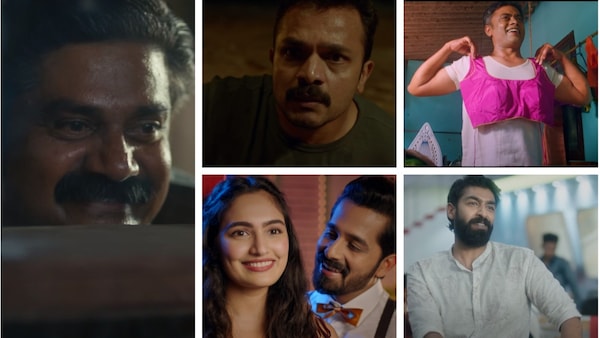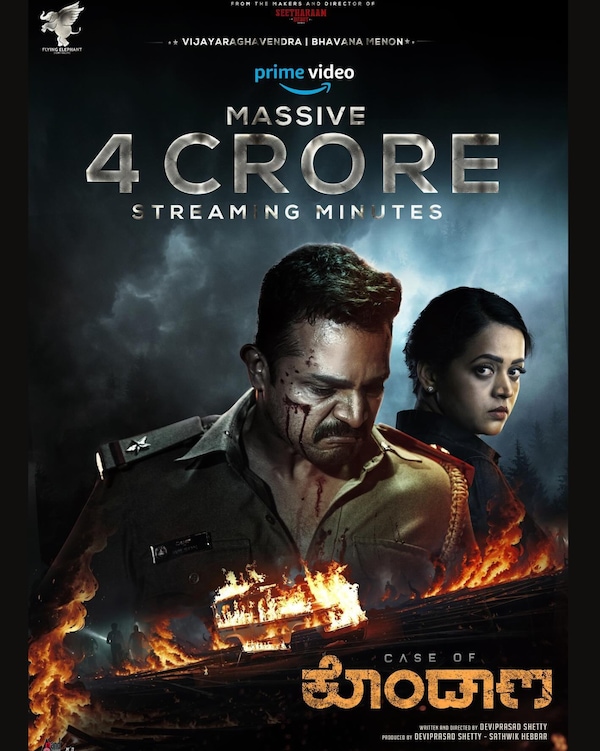Decoding the pay-per-view OTT deals of Kannada cinema and importance of streaming minutes
Kannada films that manage OTT deals are increasingly offered pay-per-view or rental-only deals on major platforms.

Last Updated: 09.51 PM, Apr 24, 2024
Have you noticed how Kannada film teams that do manage to get an OTT deal, often go to town about the streaming minutes they manage? Did you wonder why it is so important to them? Well, that’s because mainstream OTT platforms are picking Kannada films on pay-per-view basis only, with the exception of, say, a few films led by stars or backed by major production houses. At the moment, Amazon Prime Video is the major destination for Kannada films, followed by Zee5 and Sun NXT, but the latter two do not add titles as frequently as the former.

But Prime is also selective about the films it does pick up. Outright purchases are rare, while a few manage hybrid deals with some bulk payment, which may or may not be supplemented with extra based on the film’s performance on the platform. This is largely for star-led or backed films that have done average to above average theatrical business. For the vast majority, the remaining options are the pay-per-view model, wherein the platform pays Rs 3-4 per hour of streaming, or, as has been a new development, put it in the store for rental only. At the prevailing rate, the Kannada film Juni, which recently declared 1 crore streaming minutes would have made Rs 6.6 lakh only (at Rs 4 per hour), while Case of Kondana would have made four times that for its 4 crore streaming minutes.
When OTTplay reached out to filmmakers about this trend, most were willing to talk only on condition of anonymity. The producer of a recent thriller recounted how his efforts to get a response from the streamer remained futile until day 59 of the theatrical outing. “I got a response from Prime Video at 9.30 pm on day 59, many days after I first approached them. This meant that any deal would then be made as per the 60 days and after clause, under which my film would be eligible for Rs 3 per hour. Had the platform picked it up earlier, it would have been Rs 4 per hour,” he explains.
Another director-producer points out that at Rs 3 or Rs Rs 4 per hour, a film would have to get to at least 20 crore streaming minutes for it to be worthwhile. “My film has done a couple of crores streaming minutes, but that does not bring me anywhere close to recovering my costs. Putting the word out that the film is doing well on OTT only helps with securing satellite rights, which is also very difficult to come by,” says the filmmaker. How does the platform calculate the streaming time, though? Would each user account for a unique view and any repeat viewing not counted or does that get added as well? That information is not shared on the dashboard, we are told.
Several films are given the rental-option only, for, say, Rs 99 access. Ravike Prasanga, which does not have any stars, is in the store now and a few more are in line for this deal. These films will not become eligible for free streaming to subscribers.
To make matters worse, the theatrical business is also steadily falling. “The problem is not that Kannada audiences are shunning theatres. They are going; they are just not going for Kannada films. Right now, it’s the time of Malayalam cinema. Everything they touch turns gold. Last month, when I went to watch Manjummel Boys and a few days ago for Aavesham, a large section of the audience was Kannadigas. This is where star-driven films become important. First of all, Kannada does not have a lot of big stars or a solid second rung. Since Kaatera, there hasn’t been a major star vehicle in theatres. Big stars need to make films more often and the next in line also has to measure up and consistently deliver quality cinema and convince Kannada audiences that a trip to the cinemas may be worth their money after all,” the filmmaker signs off.
